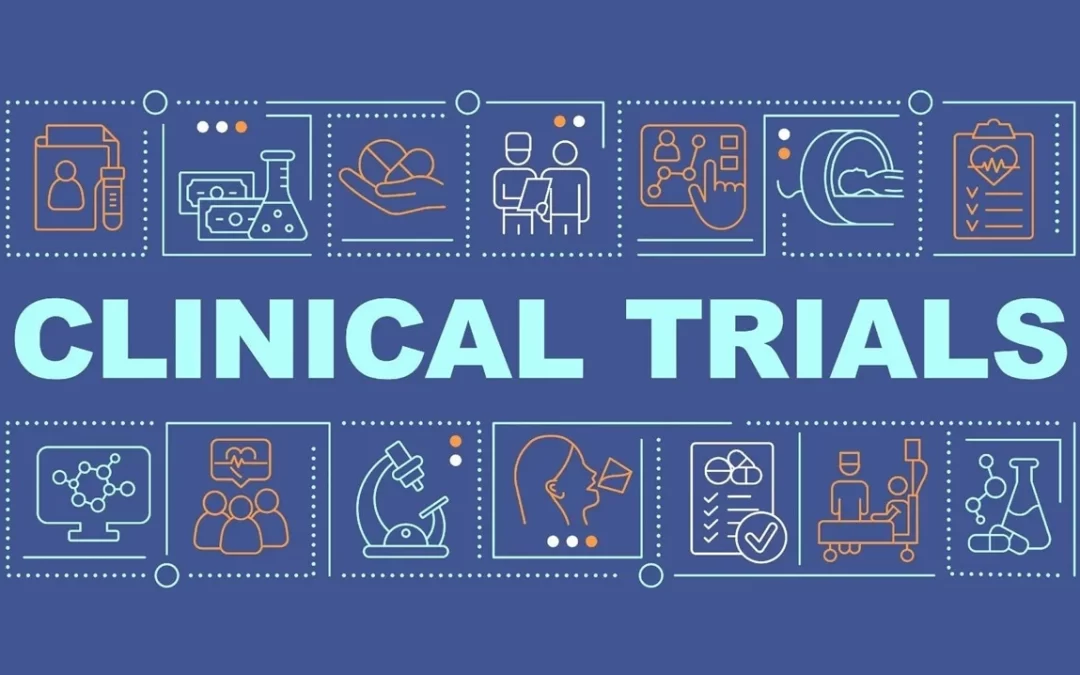
by Rick Davis | Mar 21, 2024 | Active Surveillance PCa, Blood Cancers, Brain Tumors, Cancer Resources, Pancreatic Cancer, Prostate Cancer, Recent News
What’s in a Clinical Trial? – Dr. John Antonucci’s Primer
On Tuesday, February 27 at 16:45 EST sharp, a highly-trained, elite squadron of AnCan specialists (Speak for yourself Dr. John -rd) attempted the impossible: to condense the essence of arguably the best scientific meeting on genitourinary cancer research in the world into 1 hour of intelligible, useful information. A couple of hundred scientific poster and oral research presentations from the American Society of Clinical Oncologists annual GU meeting (GU ASCO24), made available and understandable to us AnCan’rs? You can view their attempt as well as the slides at https://ancan.org/patient-highlights-from-the-2024-asco-gu-conference/ and judge how they managed.
To prepare for the session, a basic understanding of research is very helpful. It starts when scientists comes up with a question. For example, “Does Lupron do any good?” They then design a study to answer the question.
Types of studies:
Not every study is an experiment. In an experiment, the scientist does something to the subjects, such as try a new drug, and compare them to a control group, which doesn’t get manipulated. In observational research, the scientist studies the subjects but doesn’t do anything to them.
Randomized controlled trials (RCT) are a type of experiment that is highly thought of. If you want to find out if Lupron is any good, you can find 2 groups of subjects with prostate cancer, give one group Lupron, and the other group a placebo (ie no medicine, although you still administer the fake dose). You have to be careful that the 2 groups match, because if you accidentally put most of the healthy patients in group A, they will do better but mess up your results. This is the controlled part: you have to make sure both groups match except for the experimental manipulation. This is partly done by randomizing, assigning the subjects at random to the groups. At the end, you find out how long each group lived (or some other pre-established endpoint) and make a conclusion. This type of study is an experiment. It is also prospective: you create data as you go along which makes it a good study.
One of the several types of observational studies is the cohort study. Cohort studies follow groups to see how they do. For example, you could follow 1000 men over time, and see if the smokers get more prostate cancer than the nonsmokers. This could give a clue into what contributes to prostate cancer and how to prevent it. These studies are often prospective (looking into the future) but can also be look-back, or retrospective as well. A well-known cohort study in prostate cancer is the Canary Cohort that looks at low/intermediate Active Surveillance; or the Framingham Heart Cohort.
A cross-sectional study can answer questions like, what percentage of 50-year-old men have had a PSA test? You have 500 fifty year old men answer the question, and get your conclusion. It’s at one point in time. (The opposite is a longitudinal study, following subjects over time.)
Qualitative studies don’t collect numerical data like the others. If you want to find out what life is like on Lupron, you interview lots of men on the drug and get the big picture. The opposite is quantitative, where numerical data is collected.
Naturally, it makes sense to have lots of subjects in any study so you don’t get fooled by chance. For instance, you could flip a coin twice, get heads twice, and wrongly conclude that all coin flips will be heads. So big studies are better than small ones. The number of subjects in a study is known as n. As you’ll see on Tuesday, small ‘n’s make results suspect.
Which type of study is chosen depends on the question, the ethics, and the resources.
Only an experiment, like an RCT, can make a cause-and-effect conclusion, because it’s randomized and has a control group. Other studies can discover correlation; that’s when two phenomena occur together but causation is unclear.
There are studies of studies as well: A Meta-analysis will review and combine several similar studies to make the results even more convincing. A Literature review will review many studies, pick the best, and create a summary for us.
Basic science research uses instruments like petri dishes and microscopes to study molecules or cells or tissues; these are in-vitro studies. Lupron started in basic science research. Then it progressed to animal or in-vivo studies. Treatments that look promising at this stage progress to human clinical studies.
Clinical Trial Phases
You will hear human clinical studies presented as Phase I, Phase II, or Phase III studies. According to the FDA, Phase 1 has 20 to 100 healthy volunteers or people with the disease/condition. It lasts several months and is to test for safety and dosage. About 70% of drugs move to the Phase 2, where up to several hundred people with the disease/condition are studied for several months to 2 years looking at efficacy and side effects. Approximately 33% of drugs move to phase 3, where 300 to 3,000 volunteers who have the disease or condition are studies for 1 to 4 years to deeply look at efficacy and monitoring of adverse reactions.
A drug like Lupron, when it did well at all these phases, was then submitted to the FDA for approval. After approval it was still followed, in phase IV or post-marketing research, as was given to thousand of patients. Keep the phases in mind if you volunteer to be a research subject.
Screening Test Evaluations
One last thing, which came up in last week’s group: How do you measure if a test is any good? For instance an experimental test for the feared neuroendocrine cancer might be evaluated. Or what if someone asks, “Can PSA test for prostate cancer?” Two ways: you ask, “If prostate cancer is present, how good is the test at detecting it?” This is sensitivity. And, “If the test is positive, how often is prostate cancer really there?” This is specificity.
Your AnCan team looked at all those ASCO meeting presentations from last month. They looked with an eye toward good study design, importance, whether it’s an experiment or not and if so what phase it is, is it prospective, does it have a large-n, and is it of interest to men in our group. Hopefully reding this will make it easier to understand the ramblings of our AnCan Mods.
Dr. John Antonucci MD dr.john@ancan.org
(Editor’s Note: AnCan is planning a webinar on clinical trials in 2024.)
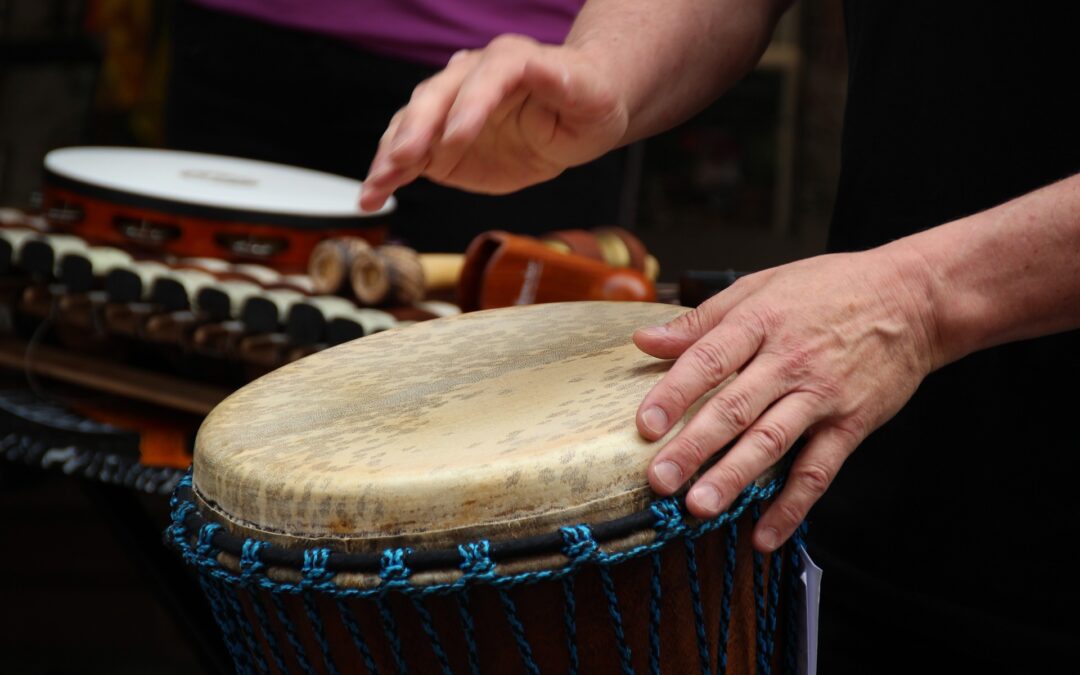
by Rick Davis | Dec 8, 2023 | Active Surveillance PCa, AYA, Blood Cancers, Brain Tumors, Cancer Caregivers, Cancer Resources, Complementary Medicine, Health Resources, mCRPC, Men 'Speaking Freely', Men's Breast Cancer, Mental Health, mHSPC, Multiple Sclerosis, nmCRPC, Ovarian Cancer, Pancreatic Cancer, Prostate Cancer, Recent News, RMC, Thyroid Cancer, Veterans, Women's Breast Cancer
Bang your drum… it could make you smarter and healthier!
I don’t want to work
I want to bang on the drum all day
I don’t want to play
I just want to bang on the drum all day
–Todd Rundgren
Twice in the last several months, the topic of drumming came up in our AnCan Men Speaking Freely group and it generated some excitement both times. So this month’s invite will be on that topic.In my former practice whenever I have given a non-verbal treatment there is a big relief that no talking is involved. In bypassing the verbal and left-brain systems we gain access to a typically unused part of ourselves. I wonder if we can use this approach to cope with our serious illnesses and have a better life?
Our brains have a characteristic called plasticity, the ability to change. You may have heard of this regarding the little finger brain circuit of violinists; it grows as they become proficient. Drummers also have different brains than the rest of us. They have fewer, thicker nerve fibers between the two halves of the brain. They have more efficiently organized motor cortices. (Schlaffke, 2019). Because of this, drummers can do things that we can’t. They can coordinate the two sides of the brain better, and perform motor tasks with greater efficiency. They can play different rhythms with each hand and foot at the same time.
Schlaffke’s subjects had drummed many hours per week for decades. But Bruchhage’s (2020) subjects trained for only 8 weeks and showed several changes in the cerebellum plus changes in the cortex, showing not only cerebellar plasticity but also communication and coordination between the cerebellum and brain sensorimotor areas as well as areas for cognitive control.
Drumming is very complicated, which is why it’s unfair that the lead guitar and vocal guy gets all the girls (Greenfield, J. 2022).
For some reason, there is a close association between beat synchronization (integrating auditory perception with motor activity) and reading ability in children (Bonacina, 2021). Higher synchronization ability predicts better literacy skills. Maybe early intervention involving drumming can improve literacy in kids?
Cahart et.al (2022) showed that drumming can improve behavioral outcomes for autistic adolescents and elucidated some of the neurology involved. Does this mean it could help us?
Drums have been used for millennia for healing, inducing trance, and even psyching up soldiers.
We have learned that drumming is not just about waking up the right brain, but also about connecting the sides of the brain, and the cerebellum with the cortex. It can induce alpha brain waves. It can release endorphins. Even T-cells respond to drumming (Bittman). It induces present-moment experience, which we often work toward to deal with death anxiety. Interpersonal connections are made when people drum together. Despite the effort involved, it induces relaxation. I have come across papers describing drumming and music therapy for a wide variety of emotional problems and currently, there are 8000 music therapists in the US.
How about for us? We see above the possibility of reductions in anxiety, tension, pain, isolation, depression, and over-thinking the past and future. There are many studies of music therapy in ICUs, with patients on ventilators, easing hemodialysis pain, with positive results. Also, helpful with narcotic use, social integration, and depression. MSKCC uses music therapy.
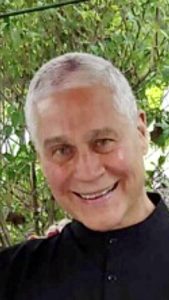 With terminal cancer, there is data showing that music helps breathing, QOL, psychospiritual integration, reducing pain in chemotherapy, radiation, and helps pediatric breast and lung Ca patients (Ramirez 2018, Hilliard 2003, Burns 2015 Tuinmann 2017, Barrera 2002, Li 2011, Lin 2011). Atkinson (2020) found improvement with fatigue. I couldn’t find any studies focused only on Prostate Cancer.
With terminal cancer, there is data showing that music helps breathing, QOL, psychospiritual integration, reducing pain in chemotherapy, radiation, and helps pediatric breast and lung Ca patients (Ramirez 2018, Hilliard 2003, Burns 2015 Tuinmann 2017, Barrera 2002, Li 2011, Lin 2011). Atkinson (2020) found improvement with fatigue. I couldn’t find any studies focused only on Prostate Cancer.
Well, all this scholarly stuff is really unnecessary to anyone who ever banged a pot with a wooden spoon. Kids love it. Adults love situations where it’s OK to be wild and make noise, such as drumming circles and Pound classes. It’s just fun and feels good.
Dr. John Antonucci
Editor: Dr. John wrote this for our Men Speaking Freely Reminder on Dec 7, 2023. It’s such a perceptive, helpful and instructive piece, AnCan wanted to share it widely.

by Rick Davis | Nov 28, 2023 | Blood Cancers, Brain Tumors, Cancer Caregivers, Cancer Resources, Health Resources, mCRPC, Men's Breast Cancer, mHSPC, Multiple Sclerosis, Pancreatic Cancer, Prostate Cancer, Recent News, RMC, Thyroid Cancer, Women's Breast Cancer
Your Dental Health
 AnCan takes a holistic approach to your physical and mental health. AnCan also recognizes that a healthy mouth contributes to a stress free life… and all too often your condition, or the meds you take for it, can disrupt dental health. Some of our groups speak frequently about dry mouth (xerostomia), loss of taste (ageusia) and ONJ … osteonecrosis of the jaw.
AnCan takes a holistic approach to your physical and mental health. AnCan also recognizes that a healthy mouth contributes to a stress free life… and all too often your condition, or the meds you take for it, can disrupt dental health. Some of our groups speak frequently about dry mouth (xerostomia), loss of taste (ageusia) and ONJ … osteonecrosis of the jaw.
When, Dr. Bob Gurmankin DMD, a recently retired dentist living with advanced prostate cancer, noticed the frequency with which these dental topics came up in his group, he suggested a two-step support program – 1) a handout on our website, and 2) a dental health webinar in 2024… watch out for this int he New Year.
One handout alone was not going serve all needs so Dr. Bob graciously prepared THREE to kick start our effort to help you maintain a healthy mouth.
Please download whatever is appropriate and spread the word to others who you think may benefit. Dr. Bob Gurmankin can be reached at dr.bob@ancan.org ; if you have questions he has kindly agreed to assist… THANK YOU DR. BOB!!!
Please participate in our Groups where you’ll find more support… onward & upwards.
Other Resources

by Rick Davis | May 22, 2023 | Active Surveillance PCa, Advocacy, Blood Cancers, Brain Tumors, Cancer Caregivers, Cancer Resources, Health Resources, hospice and palliative, mCRPC, Men's Breast Cancer, mHSPC, Multiple Sclerosis, nmCRPC, Ovarian Cancer, Pancreatic Cancer, Prostate Cancer, Recent News, RMC, Sarcoidosis, Thyroid Cancer, Women's Breast Cancer
ICE Checklist … in case you go cold!
Last month’s Under 60 Stage 3 & 4 Prostate Cancer meeting was small, intimate and produced a true gem from Down Under to benefit all AnCan’rs …
For the life of me, I forget what raised the topic … maybe a Death with Dignity discussion – but Aussie AnCan’r, Steve Cavill told us about the ICE “In Case of Emergency” Checklist Document that he and his wife Leonie, who occasionally attends our Care Partners Group, have both completed. Steve and Leonie reside in the suburbs of Melbourne and are currently heading towards mid-Winter.
This ICE Checklist takes much, if not all, the difficulty out of placing your key information in one place. Like your vital passwords to your laptop, phone or bank accounts; names of key individuals in your life and more. You know .. all that information making it possible for someone to piece your life together if you’re suddenly no longer with us.
Frankly it’s information we should all compile no matter how old. With this checklist guide at hand to march us through it, there can be few excuses. Just remember, this version of the ICE checklist was created in Oz, so it may not be fully applicable Stateside. If one of our US volunteers has time to ‘Americanize’ it, I feel sure it will be greatly appreciated – we have very few solicitors in the US and a few too many attorneys!
Here’s the checklist document in Word format ICE Document Template Now do your part …. and a BIG THANK YOU, Steve Cavill!!
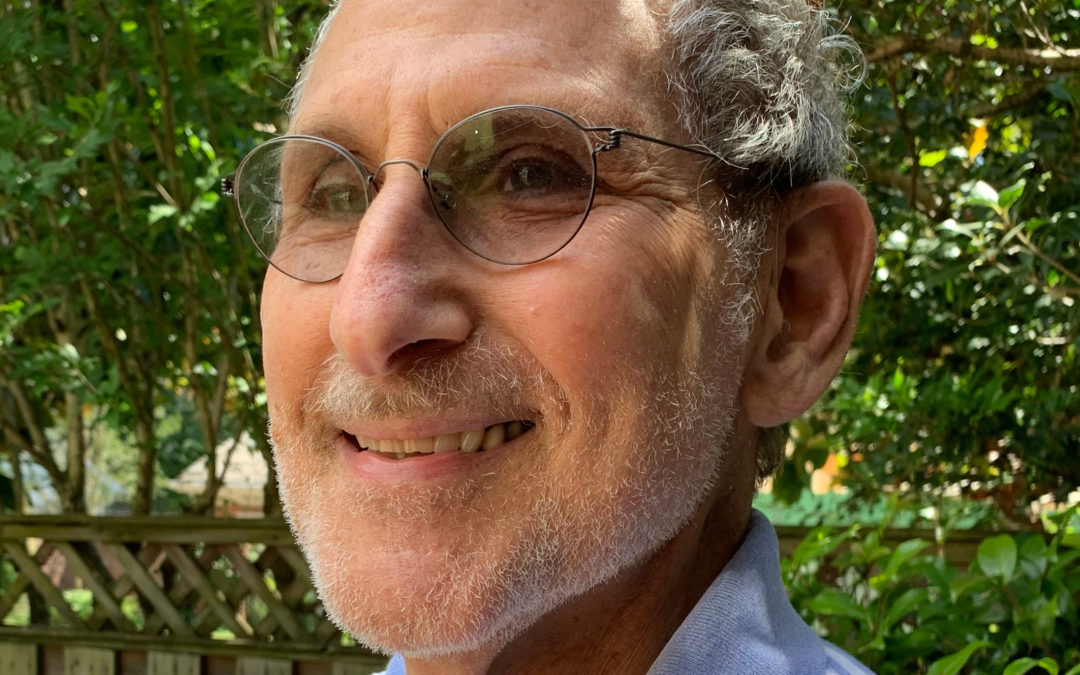
by Rick Davis | Apr 16, 2023 | Active Surveillance PCa, Art, Blood Cancers, Cancer Caregivers, Cancer Resources, mCRPC, Men 'Speaking Freely', mHSPC, nmCRPC, Pancreatic Cancer, Prostate Cancer, Recent News, RMC, SOH, Solo Arts Heal, Thyroid Cancer, Volunteers
Herbert (‘Herb’) Miles Geller, PhD 1945-2023
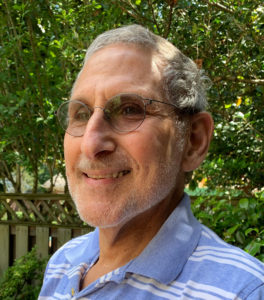
1948-2023
I am writing with a very heavy heart to report the death of our dear Board Member, Advisory Board Member, Moderator, Participant and my good buddy, Herb Geller PhD G-d Rest His Soul.
The loss of dear Herb z”l is already reverberating around AnCan and will undoubtedly amplify as more learn of his demise. Herb touched many well beyond his Advanced Prostate Cancer ‘Brains Trust’, Moderators, Peers and Participants. The Blood Cancer group got to know him well when he attended regularly on behalf of his brother. The Pancreatic Cancer folks met him when he showed up for his next door neighbor. Our Men Speaking Freely Group loved and respected him for sharing his fears and concerns. Members of our Advisory Board got to interact with Herb as did Medical Academics and others who participated in AnCan’s research projects.
Here are a few of the words I already see bandied around –
- “kind, smart, caring, thoughtful”
- “My heart is heavy and I’m at a loss for words. There is something I’m feeling that I can’t express sufficiently”
- “this is the deepest hurt since we lost Dominic (2015)”
- “Thanks to each of you for your loving support of him and all of us for each other.”
Herb passed away from advanced prostate cancer that had evidently morphed into small cell/neuroendocrine like (NEC) disease. A late diagnosis just one day before he entered the NIH, his place of work, identified this. Herb was scheduled to undergo tests for his highly elevated endocrine markers, however the source was now evident on admission. The NIH never appeared to acknowledge or treat him for this diagnosis. It finally added a neuroendocrine oncologist to Herb’s team after 21 days after repeated AnCan prodding from the date of admission. Herb underwent research procedures related to Cushing’s Disease and its symptoms. In due course, AnCan will follow up as appropriate.
Never one to give up the opportunity to sail anything from a small dinghy to an ocean-going yacht, Dr. Herb Geller was a nationally recognized expert in neuro-biology; a profile is available on the NIH site. Herbie loved a a good Scotch, in Skye or anywhere else. On his request, AnCan did its best to sneak in a wee dram just to wet his lip in the final days but the ‘powers that be’ prevented us. I’ll have one for you tonight, Herb! And, we’ll make sure both your AnCan posters get written up for submission with credit to you.
Herb is survived by his wife of 55 years, Nancy, Director of the Office of Biostatistics for the National Heart, Lung and Blood Institute at the NIH. Also his younger brother, Ken, an eminent Supreme Court Advocate kennethsgeller@gmail.com. We wish Herb’s family and many friends, especially his “AnCan Family”, much comfort. May Herb’s memory always be a blessing – it certainly will be here at AnCan.
For our Jewish readers, Herb’s z”l Hebrew name is Chanan Moshe ben Aaron v’Sara; he died on 25th Nisan.
O&U, rd
Herbert Geller Obituary (2023) – Washington, DC – The Washington Post
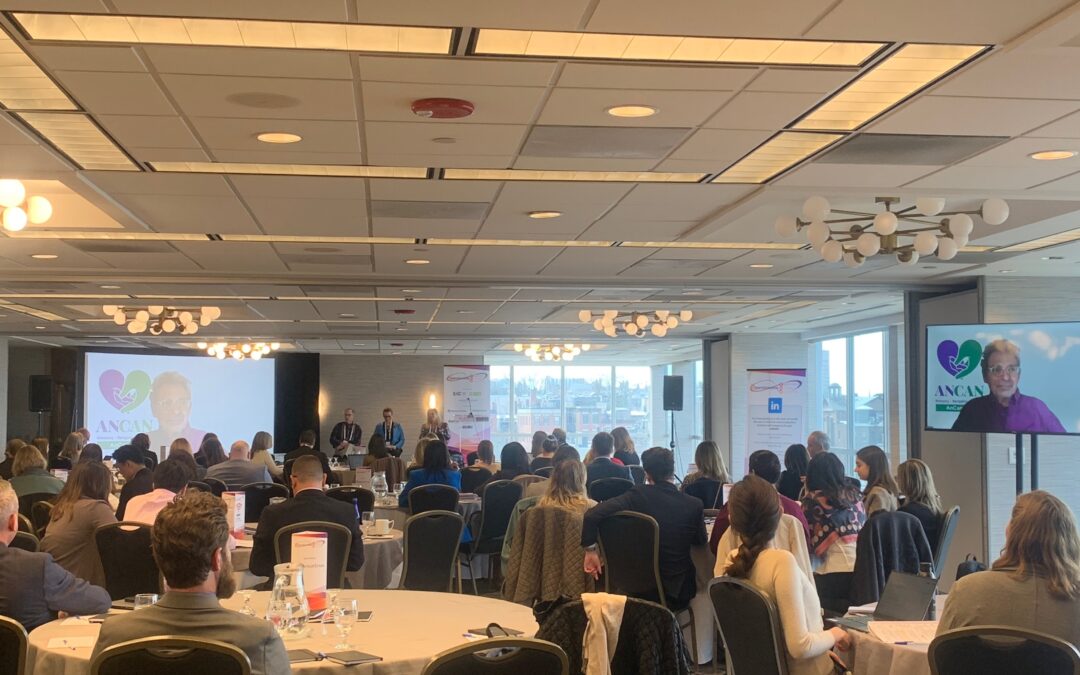
by Rick Davis | Mar 29, 2023 | Advocacy, Blood Cancers, Brain Tumors, Cancer Caregivers, Cancer Resources, mCRPC, Men's Breast Cancer, Ovarian Cancer, Pancreatic Cancer, Prostate Cancer, Recent News, RMC, Sarcoidosis, Thyroid Cancer, Women's Breast Cancer
AnCan VIRTUALLY speaks to Extended Access Programs!
When AnCan Advisory Board Member, Jeff Waldron asked us to participate in a pharmaceutical industry Conference on Expanded Access Programs (EAP) in Boston at the end of March, we were only to happy to amplify the patient voice.
A couple of background factors. For those of you not aware, EAP is the name given to programs that allow needy patients access to groundbreaking drugs that have not yet received regulatory approval – in the US case, by the FDA. All of our guys who received Pluvicto (Lu177 PSMA 617) through ‘Managed Access’ last year were actually enrolled in a form of EAP. As you may recall, when the FDA approved Pluvicto, the Managed Access Program ceased to exist and patients were rapidly transferred to commercial providers.
Our good friend, Jeff Waldron, has a back ground working with both Payers and Pharma. He is one of our most well-connected Advisors, and for the past 3 years, has organized an international EAP Conference. All but the smallest pharmas have an EAP. The past two years conferences were virtual, but this year it was held live in Boston from March 21-23.
 Rick Davis attended virtually on behalf of AnCan to participate in a panel moderated by Jeff entitled,“Closing the Gap of How We Reach Patients”. Ours was the sole direct patient particpation in the 2-day proceedings, and one thing was for sure – they couldn’t miss ‘rd’ as you’ll see from the photgraph alongside. Live feedback was very positive, especially from hearing the difficulties patients encounter. Perhaps the single exception.was a senior drug executive from a pharma with whom AnCan works closely. She presented for 25 minutes immediately before the Panel, finally mentioning patients in her closing sentence. When Rick pointed that out, she was none too pleased.
Rick Davis attended virtually on behalf of AnCan to participate in a panel moderated by Jeff entitled,“Closing the Gap of How We Reach Patients”. Ours was the sole direct patient particpation in the 2-day proceedings, and one thing was for sure – they couldn’t miss ‘rd’ as you’ll see from the photgraph alongside. Live feedback was very positive, especially from hearing the difficulties patients encounter. Perhaps the single exception.was a senior drug executive from a pharma with whom AnCan works closely. She presented for 25 minutes immediately before the Panel, finally mentioning patients in her closing sentence. When Rick pointed that out, she was none too pleased.
So what did we say. The take- away points for pharma were:
- Publcize your EAP in a way that is understandable and accessible to and for patients
- Provide support to the patients’ medical team filling out the paperwork to help eliminate that as a hurdle to access
- Respond quickly so patients are not hanging out waiting to hear if they can access the EAP drug
- Be sure trialled drugs are available to patients benefitting from their use, if the trial is stopped and the drug has not been approved.
AnCan’rs – just another example of how we ensure your voice is being heard … we have your back!




 With terminal cancer, there is data showing that music helps breathing, QOL, psychospiritual integration, reducing pain in chemotherapy, radiation, and helps pediatric breast and lung Ca patients (Ramirez 2018, Hilliard 2003, Burns 2015 Tuinmann 2017, Barrera 2002, Li 2011, Lin 2011). Atkinson (2020) found improvement with fatigue. I couldn’t find any studies focused only on Prostate Cancer.
With terminal cancer, there is data showing that music helps breathing, QOL, psychospiritual integration, reducing pain in chemotherapy, radiation, and helps pediatric breast and lung Ca patients (Ramirez 2018, Hilliard 2003, Burns 2015 Tuinmann 2017, Barrera 2002, Li 2011, Lin 2011). Atkinson (2020) found improvement with fatigue. I couldn’t find any studies focused only on Prostate Cancer.
 AnCan takes a holistic approach to your physical and mental health. AnCan also recognizes that a healthy mouth contributes to a stress free life… and all too often your condition, or the meds you take for it, can disrupt dental health. Some of our groups speak frequently about dry mouth (xerostomia), loss of taste (ageusia) and ONJ … osteonecrosis of the jaw.
AnCan takes a holistic approach to your physical and mental health. AnCan also recognizes that a healthy mouth contributes to a stress free life… and all too often your condition, or the meds you take for it, can disrupt dental health. Some of our groups speak frequently about dry mouth (xerostomia), loss of taste (ageusia) and ONJ … osteonecrosis of the jaw.



 Rick Davis attended virtually on behalf of AnCan to participate in a panel moderated by Jeff entitled,“Closing the Gap of How We Reach Patients”. Ours was the sole direct patient particpation in the 2-day proceedings, and one thing was for sure – they couldn’t miss ‘rd’ as you’ll see from the photgraph alongside. Live feedback was very positive, especially from hearing the difficulties patients encounter. Perhaps the single exception.was a senior drug executive from a pharma with whom AnCan works closely. She presented for 25 minutes immediately before the Panel, finally mentioning patients in her closing sentence. When Rick pointed that out, she was none too pleased.
Rick Davis attended virtually on behalf of AnCan to participate in a panel moderated by Jeff entitled,“Closing the Gap of How We Reach Patients”. Ours was the sole direct patient particpation in the 2-day proceedings, and one thing was for sure – they couldn’t miss ‘rd’ as you’ll see from the photgraph alongside. Live feedback was very positive, especially from hearing the difficulties patients encounter. Perhaps the single exception.was a senior drug executive from a pharma with whom AnCan works closely. She presented for 25 minutes immediately before the Panel, finally mentioning patients in her closing sentence. When Rick pointed that out, she was none too pleased.